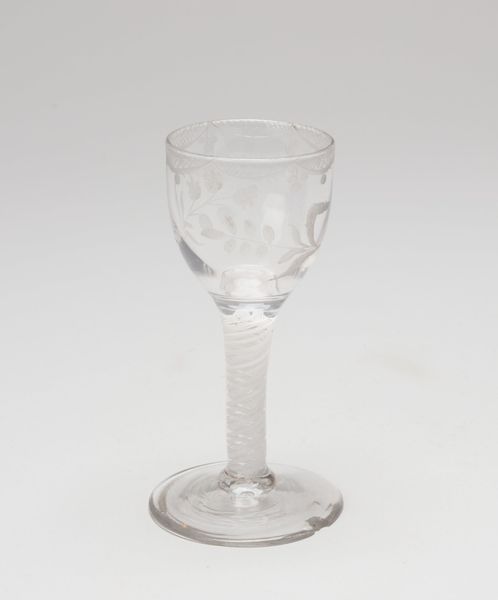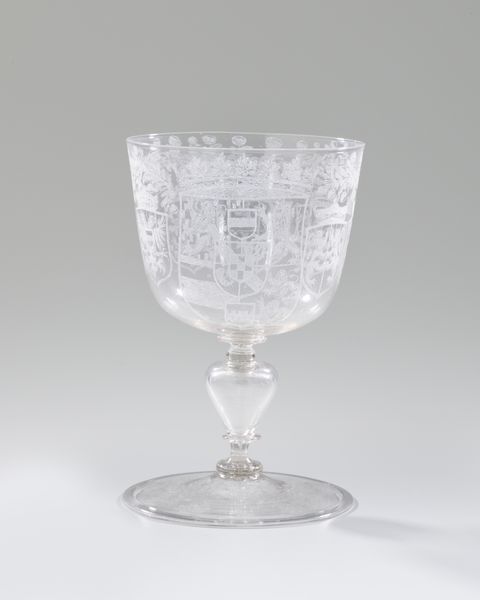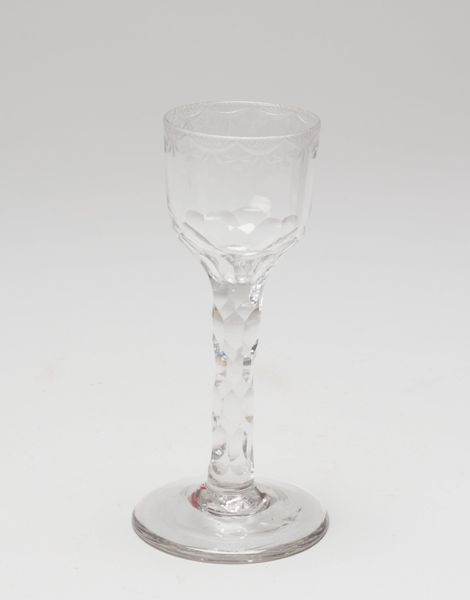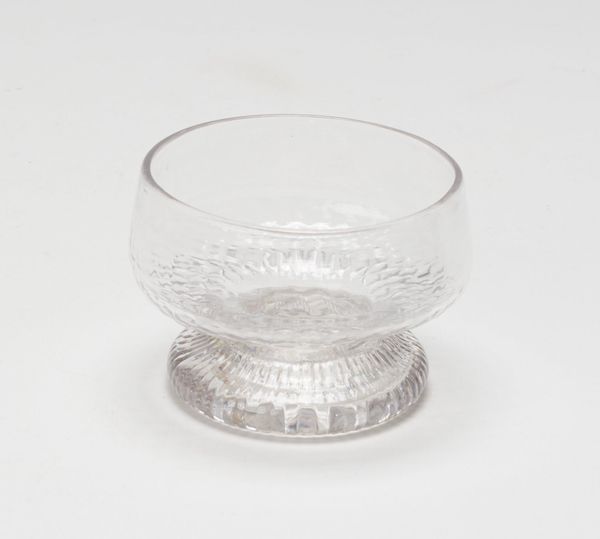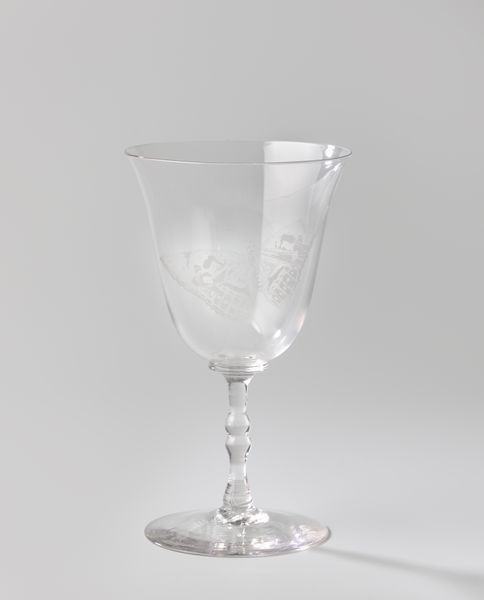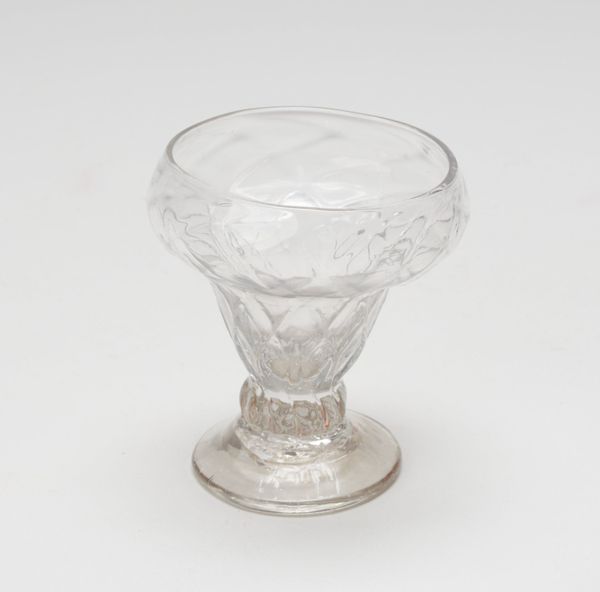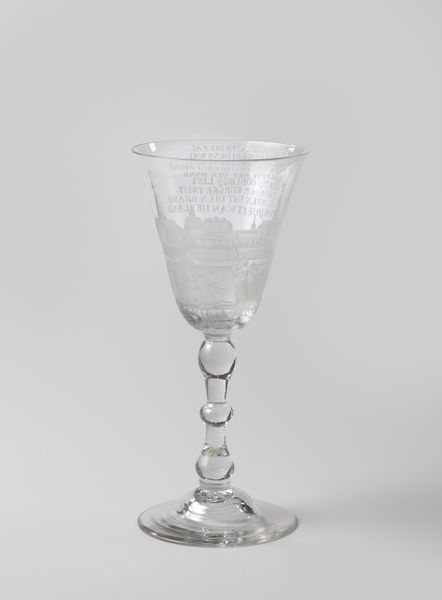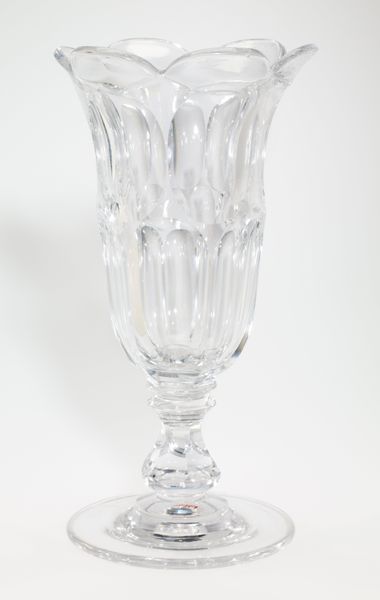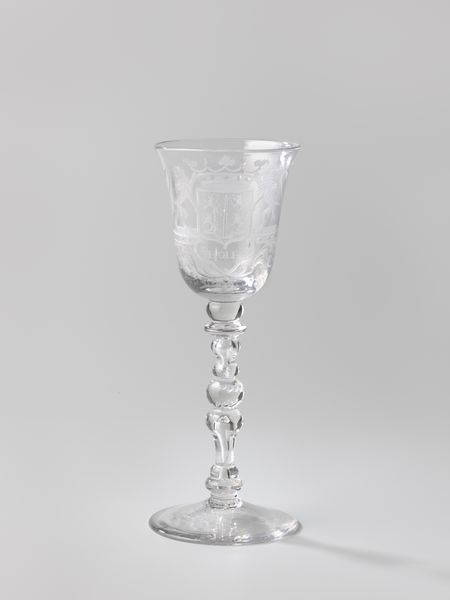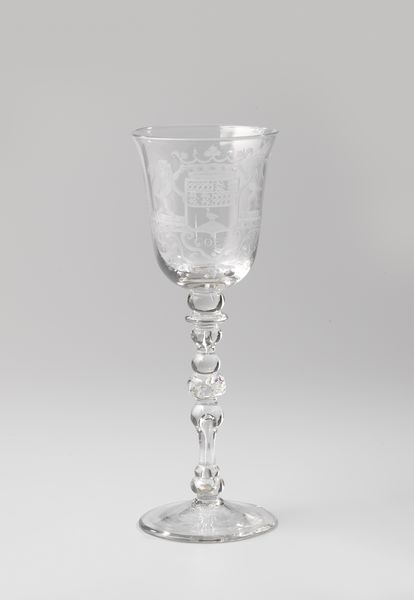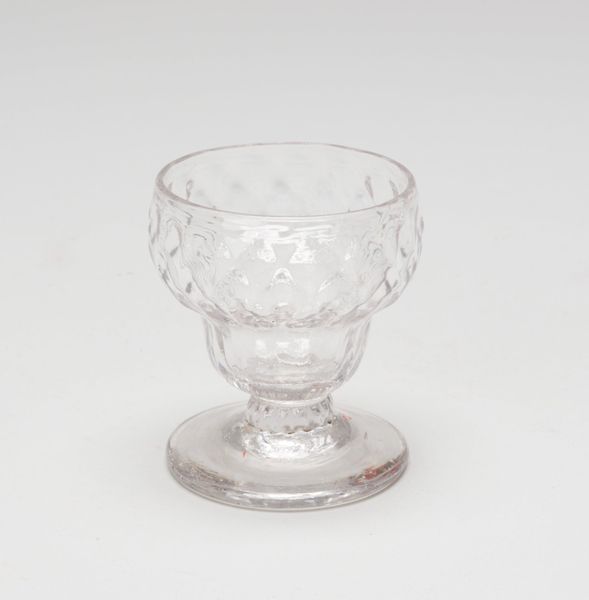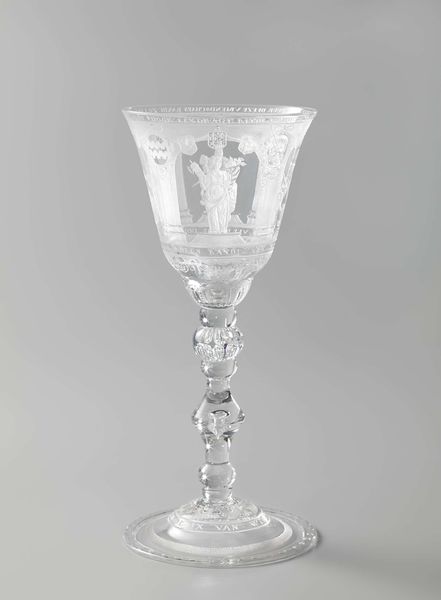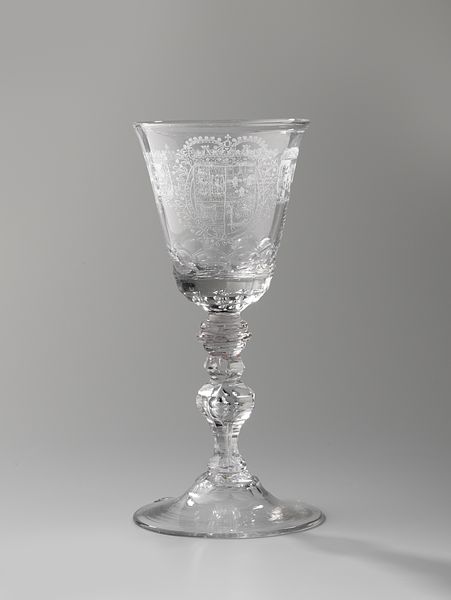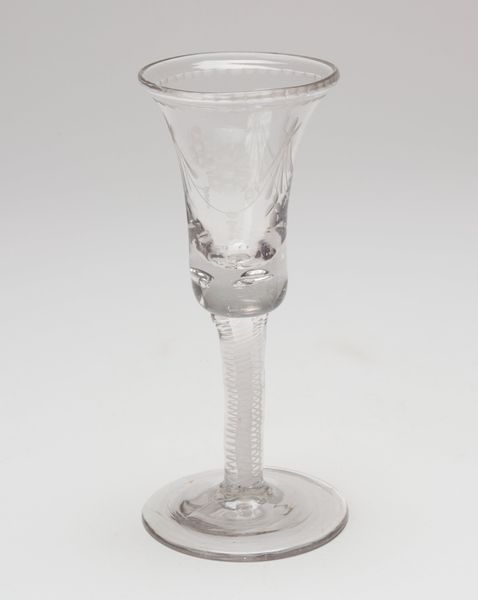
glass
#
glass
#
decorative-art
#
rococo
Dimensions: 4 x 2 7/8 x 2 7/8 in. (10.16 x 7.3 x 7.3 cm) (approximately)
Copyright: Public Domain
Curator: Here we have an exquisite glass piece from around 1750 to 1780, currently residing at the Minneapolis Institute of Art. Doesn't it just shimmer? Editor: Absolutely. It evokes a strange sense of both delicacy and power for me. It appears to be made of the purest, clearest glass. What function do you think it fulfilled? Curator: Knowing the period, and seeing the elaborate Rococo detailing, it was probably used for serving something sweet. Like a dessert or perhaps candied fruit. These little luxuries were powerful signifiers for the aristocracy, and this period saw incredible decorative pieces—think Marie Antoinette. Editor: Precisely. And within the decorative arts, even a seemingly innocuous glass could signify socio-economic divisions. Who had access to sugar and ornate glass? Whose labor produced those goods? The sparkle and elegance obscure complex global networks of power, slavery and trade. Curator: That’s an excellent point. It's easy to get lost in the details of the cut glass and its refined craftsmanship and forget the darker underbelly. I’m drawn to the stem's subtle decorative notches, like delicate crystalline branches. Editor: The emphasis on elegance over utility in Rococo design is telling. What did that signify for wealthy families at this time? I always wonder if the fragile stem feels like a visual metaphor. Easy to break and indicative of a precarious society built on inequality. Curator: It's a thought-provoking juxtaposition. But I still find myself admiring the technical skill of whoever created this. Glassblowing wasn’t exactly an easy craft. Editor: Definitely. And thinking about who consumed from such a glass, we also need to question the absence of women from such a narrative. Even a beautifully crafted object is fraught. Curator: The glass serves as a powerful memento of times gone by, sparkling or shadowed. Editor: Ultimately, it reminds us of the persistent echoes of inequality within artifacts.
Comments
No comments
Be the first to comment and join the conversation on the ultimate creative platform.
